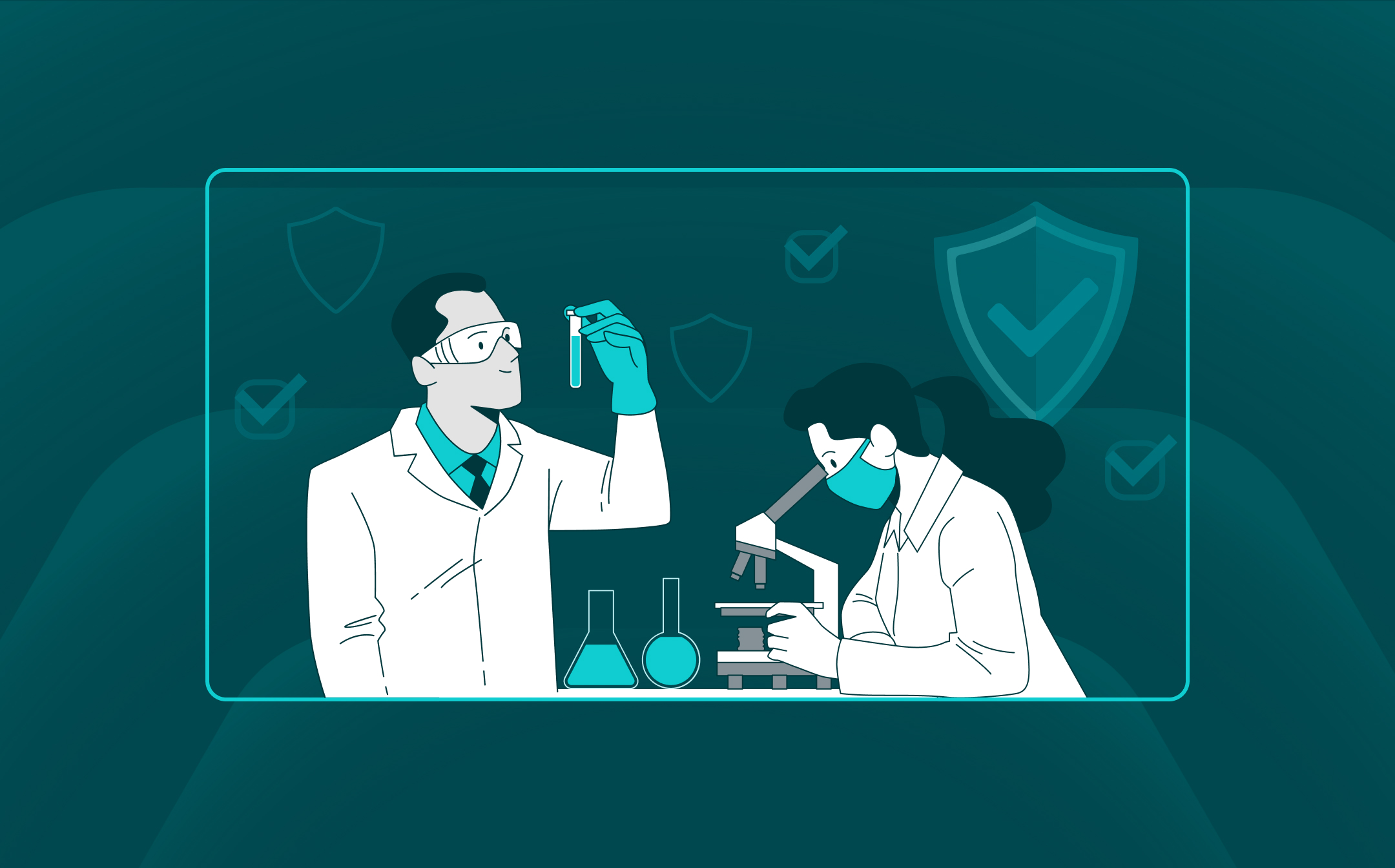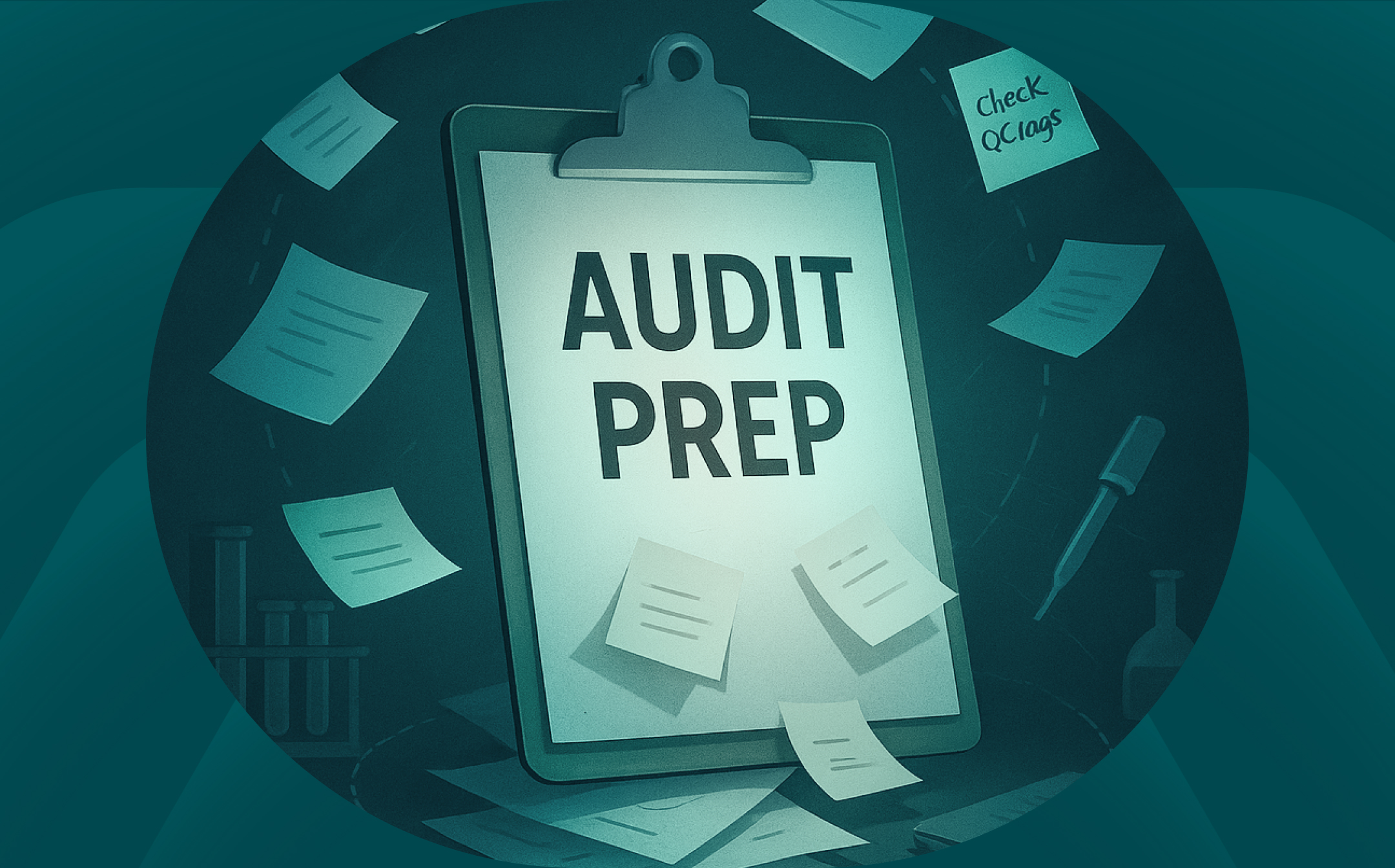Organizational Risk in Scientific Research: It’s Bigger Than You Think
Learn how SciSure's SMP delivers reproducible research and reduces organizational risk through technology built specifically for practicing safe and compliant science.

Download Whitepaper
This is not a game... People's lives are on the line.
In labs around the world, risk management is still too often treated as a checkbox—a compliance form, a safety poster, a door sign, or a training module that may or may not have been completed. But from where I sit, and especially within context of the most significant pandemic in modern history, the traditional definition of ‘risk management’ is dangerously narrow. And dangerously outdated.
Risk starts with quite simply a lack of a digital record of what experiments are being performed, which samples are used, and what protocols were followed. Imagine if a physician treating you was unable to locate your medical history, was unable to produce digital clinical notes, and could not look up what medications were prescribed? In modern labs, the ability to reproduce research findings is critical, and the risk of losing research is a major reason why drugs on average take 10-15 years to develop with an up to 90% failure rate1.
Far beyond reproducible research, risk in scientific environments is extremely high stakes. The consequences of a single misstep can be severe, far-reaching, and permanent. It’s not just about whether your audits are in order or if your chemicals are correctly labeled. Misunderstanding and mishandling of organizational risk management can yield costly lawsuits. Equipment failures could halt critical research; a piece of equipment left unmonitored could spoil samples and put the health and safety of scientists and the quality of experiments at risk. A single inventory error (especially with hazardous chemicals) can lead to an uncontained fire at worst or a citation from a local fire department at best. And it’s about the regulatory and reputational fallout that follows, jeopardizing not just the science, but the scientists and the population depending on it.
The reality, unfortunately, is that most scientific research organizations are underprepared to address organizational risk, holistically. But it’s not due to carelessness—it’s because they’re relying on a patchwork of poorly integrated point solutions that do not connect with one another. Systems and data become fragmented, oversight slips, and risk multiplies. And when something does go wrong, organizations lack the capabilities to respond.
At SciSure, we believe that needs to change. And fast. Because when your infrastructure can’t support safe, connected, and reproducible science, it’s not just a person in a lab that is at risk. It can and will impact entire organizations.
The expanding definition of organizational risk in the lab
For many institutions, “risk management” still begins and ends with compliance—making sure safety data sheets are filed, audits are passed, and training is up to date. All important. But that narrow view misses the wider scope of organizational risk that organizations face every day.
Organizational risk can result in not only regulatory fines or failed inspections, but operational breakdowns, reputational damage, intellectual property loss, and even legal liability. These aren’t abstract threats—they’re real consequences that emerge when your systems can’t keep up with scientific complexity.
Imagine a promising discovery lost inside of a paper notebook that leaves with a departing researcher. A mislabeled chemical triggering a safety incident. A training lapse that results in an unqualified person operating high-risk equipment or mishandling hazardous chemicals. Imagine a safety eye wash or shower in a lab that is not turned on for years or inspected regularly? These scenarios are common failure points in labs running on disconnected systems that are not focused on holistic organizational risk management.
In labs around the world, risk management is still too often treated as a checkbox—a compliance form, a safety poster, a door sign, or a training module that may or may not have been completed. But from where I sit, and especially within context of the most significant pandemic in modern history, the traditional definition of ‘risk management’ is dangerously narrow. And dangerously outdated.
- Wasted research effort, when poor systems prevent illumination of the research occurring in real time, informing speedy go/no-go decisions on unviable projects.
- Lawsuits stemming from irreproducible research, missing digital records, or IP ownership disputes.
- Fines for inadequate reporting or noncompliance with fire codes, biosafety rules, and local regulations.
- Audit failures that stall funding, delay research, or expose gaps in oversight.
- Fire hazards, from mislabeled or misplaced chemicals and incompatible storage.
- Inventory risks, including missing samples, spoiled materials, and even the disappearance of dangerous substances.
- Untrained personnel using high-risk equipment or performing hazardous protocols.
- Equipment breakdowns due to missed maintenance or poor oversight.
- Biosafety incidents—as the world was reminded during COVID—that can escalate into public health emergencies.
- Delayed lab permits due to poor documentation or lack of operational readiness.
- Manual data errors in spreadsheets that compromise data integrity—or worse, result in lost discoveries.
- Paper-based records that vanish with staff turnover, or are literally recycled with critical insight inside.
These are not rare edge cases. They’re common, costly, and often preventable failures that emerge when labs operate without centralized, integrated systems, focused on delivering results while minimizing risk.
Beyond passing inspections, organizational risk management is about protecting your science, your people, and your future. In a world where a single mistake can lead to reputational damage, legal exposure, or public health consequences, scientific organizations must think bigger—and act sooner—when it comes to mitigating organizational risk.
Why your systems are your first line of defense
You can’t manage what you can’t see. And when your lab’s infrastructure is built on disconnected systems, what you can’t see can hurt you.
Risk often takes root in operational blind spots, such as missed equipment checks, untracked chemicals, expired certifications, mislabeled samples, and out-of-date inspections. These aren’t caused by carelessness, but by architecture: the fractured, bolt-on infrastructure that’s become the norm in too many labs fail to illuminate the precise data required to assess and mitigate organizational risk.
That’s why we built something fundamentally different: the SciSure Scientific Management Platform (SMP). It brings together every critical layer of lab operations—health and safety, inventory, training, equipment, and research data—into a single, integrated ecosystem. No more bouncing between disconnected systems or relying on workarounds. With the SMP, labs operate from one central source of truth: a shared home base where scientists, safety officers, and leadership stay aligned, informed, and in control.
This connected infrastructure mitigates organizational risk in three powerful ways:
- It improves visibility. Lab managers, Principal Investigators, EHS teams, Lab Operations, and Senior Leadership can see what’s happening across every lab in real time. Whether it's a flagged inspection, a chemical storage issue, a missed training deadline, or simply an inventory of people, places, and hazards, nothing is hidden.
- It strengthens traceability. From procurement through to publication, every item and action is digitally logged and re-producible. Inventory is auto-classified. Experiments are linked to protocols. Data is preserved, and accountability is built in.
- It standardizes safety and compliance. Training is recorded in-platform, tied directly to user roles and workflows. Chemical inventory management is not buried but automated instead. Reporting and audit readiness becomes part of the daily routine, not a last-minute scramble.
Because no two organizations or labs are exactly alike, the SMP is built to evolve with your organization’s needs. With open application programming interfaces (APIs) and seamless custom integration capabilities, it connects with your existing tools and infrastructure, maximizing flexibility making your organization future-proof and responsive as new technologies emerge.
Intelligence only works if the infrastructure does
Centralizing your tools and data lays the groundwork for what comes next. As artificial intelligence (AI) and machine learning become practical realities in scientific labs, systems need more than connectivity—they need clarity. And that starts with clean, consistent, centralized data to combat data fragmentation and siloed systems.
Without clean data, even the most sophisticated AI-powered systems are limited, and can introduce new risks instead of solving them. That’s why integrated digital lab infrastructure isn’t just a technical upgrade, it’s a critical enabler of intelligent, risk-aware operations.
The SciSure Scientific Management Platform delivers that foundation. All operational data—from inventory to inspections, training records to equipment logs—flows through a single platform. That means labs can maintain visibility into research and experiments, enforce safety protocols, trace activity across the research lifecycle, and stay audit-ready by default.
With that foundation in place, your lab can be future-ready for AI integration, unlocking the potential to:
- Spot patterns in compliance issues across locations or teams
- Predict safety risks based on historical incident trends
- Assist with faster classification and inventory management using image recognition
- Prioritize alerts based on pattern recognition and historical incident data
These aren’t just productivity wins—they’re risk mitigators. AI has the potential to be a proactive partner in lab safety, reproducibility, and decision-making—but only if the infrastructure is ready for it.
From reactive compliance to proactive stewardship
Many labs treat compliance as a periodic task—something to prepare for in advance of an audit, not something embedded in day-to-day operations. But that mindset is changing fast.
Regulatory scrutiny is intensifying across the globe. In May 2025, an executive order in the United States, “Restoring Gold Standard Science”, expanded federal oversight of research labs, public and private alike. Local agencies are also stepping up: fire departments now routinely require up-to-date chemical inventories, and biosafety protocols are under sharper review in the wake of COVID-era lessons.
In this climate, ticking boxes isn’t enough. Labs are expected to demonstrate continuous oversight, enforceable safeguards, and digital traceability. This is where the conversation shifts from compliance to stewardship. Because the real question isn’t “can we pass an audit?” It’s “can we guarantee the integrity of our science—and the safety of those doing it?”.
Stewardship means knowing your risks before an inspector points them out. It means building infrastructure that protects your science as carefully as you pursue it. And it means recognizing that organizational risk doesn’t just threaten lab operations, it also threatens public trust.
Resilient science starts with the right systems
Organizational risk isn’t theoretical. It’s operational, financial, and sometimes existential. And in today’s labs, it’s growing.
Labs can’t afford to be reactive. The risks are too great, and the consequences too far-reaching. Whether it’s a safety incident, a lost dataset, or a delayed approval, every gap in oversight undermines not just your research but the trust that research depends on.
The answer isn’t more tools. It’s better infrastructure.
At SciSure, we believe the future of science depends on systems that do more than capture data—they protect it. Systems that don’t just enable research, but safeguard it. That’s why we built the SciSure Scientific Management Platform from the ground up for the people who need it—to give labs the foundation they need to work smarter, move faster, and reduce risk at every level.
Because when the stakes are this high, the infrastructure behind your science matters as much as the science itself.
Ready to take a proactive approach to organizational risk?
Let’s talk. SciSure is here to help you build a lab environment that’s safer, smarter, and built for the future.
1 Sun, D., Gao, W., Hu, H., & Zhou, S. (2022). Why 90% of clinical drug development fails and how to improve it? Acta Pharmaceutica Sinica B, 12(7), 3049–3062. https://doi.org/10.1016/j.apsb.2022.02.002
Read more of our blogs about modern lab management
Discover the latest in lab operations, from sample management to AI innovations, designed to enhance efficiency and drive scientific breakthroughs.





.jpg)